The illuminated manuscript images below are owned by Fondation Martin Bodmer in the Geneva municipality of Cologny and hosted online through the esteemed Virtual Manuscript Library of Switzerland.
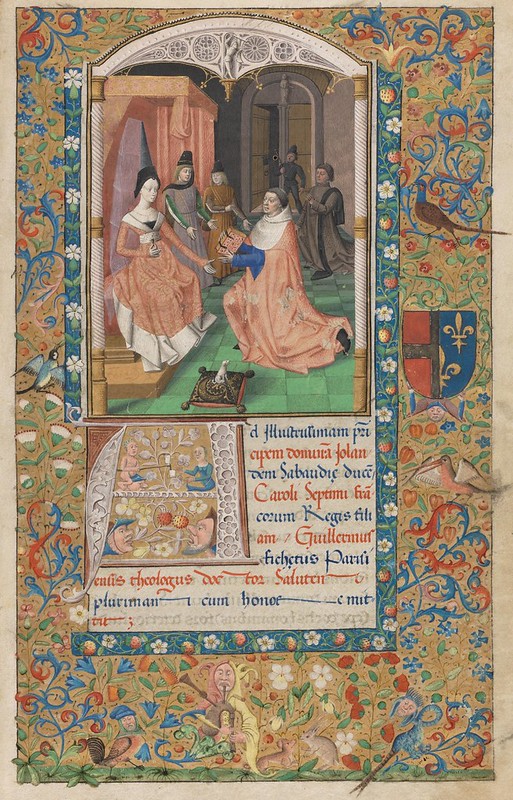

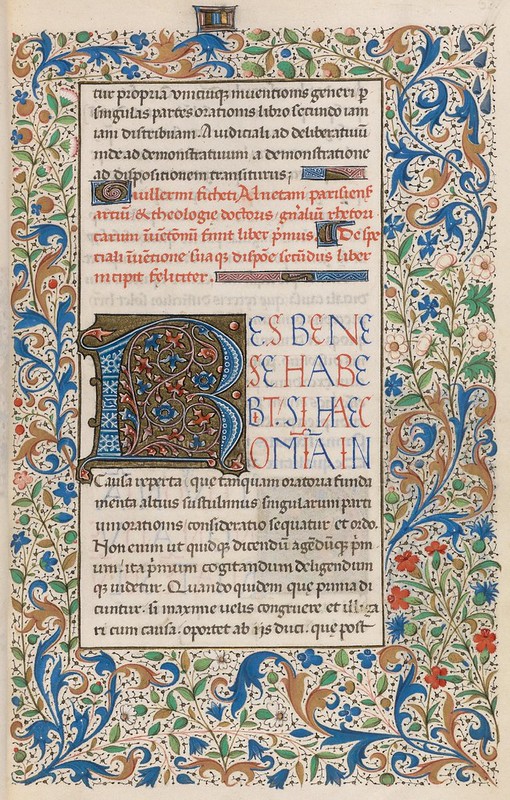
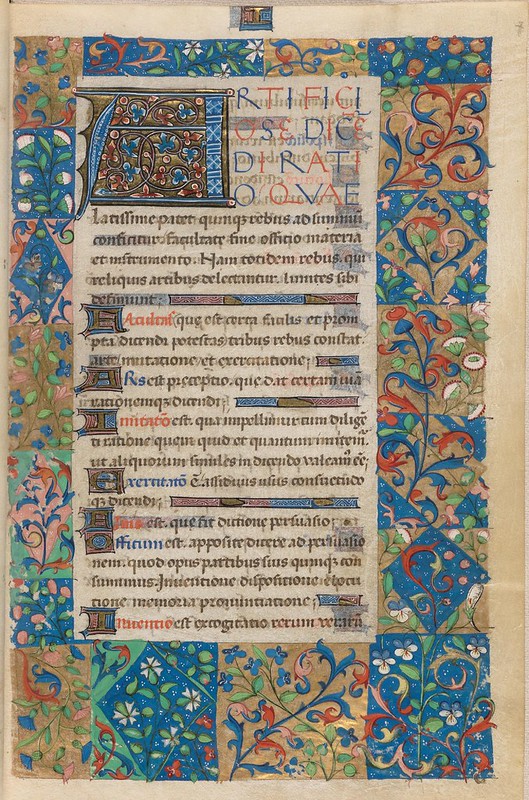
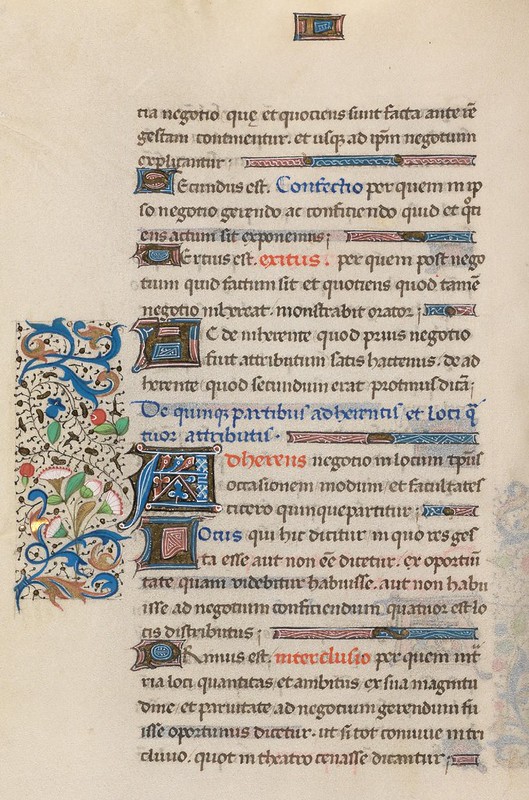
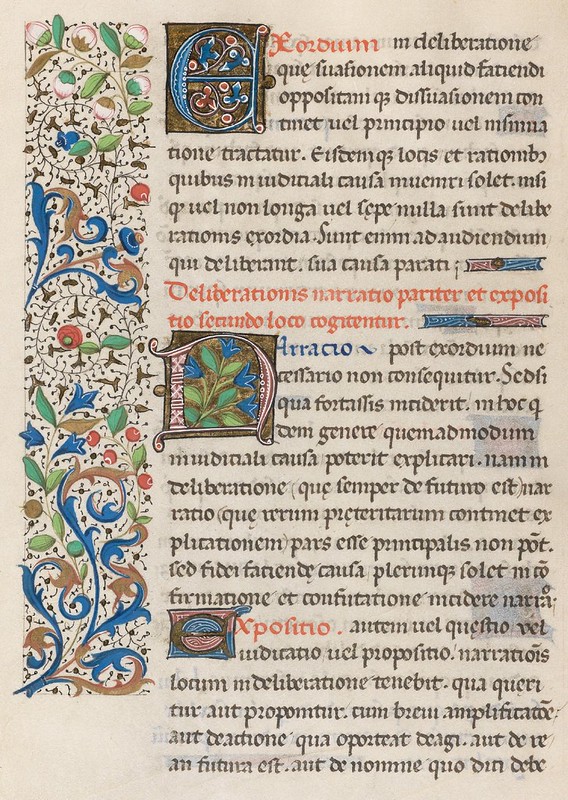
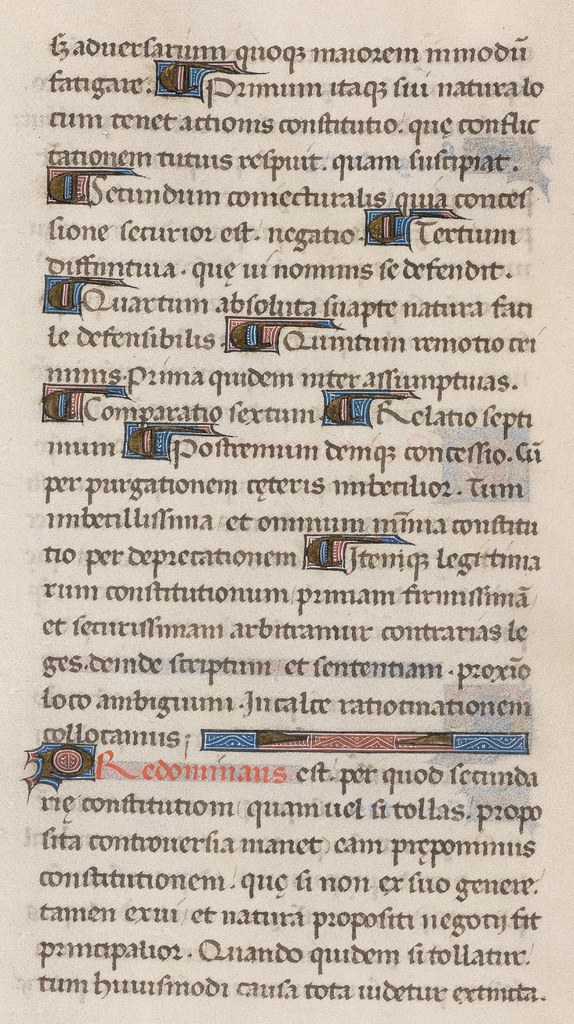
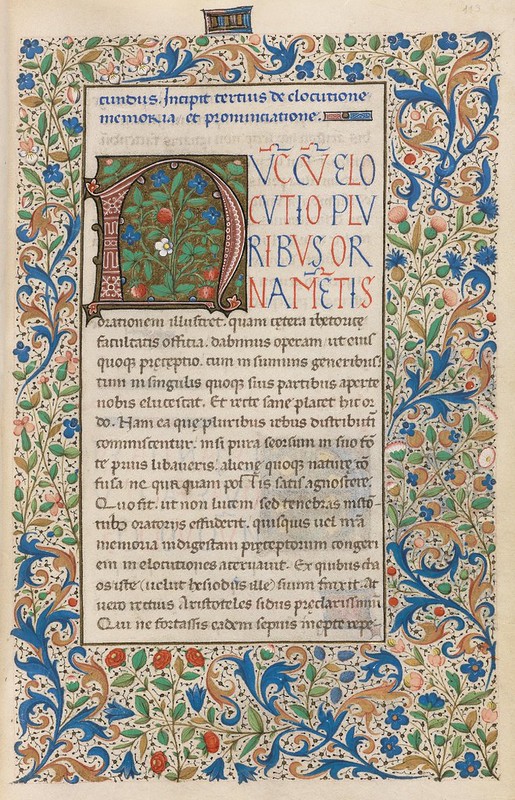



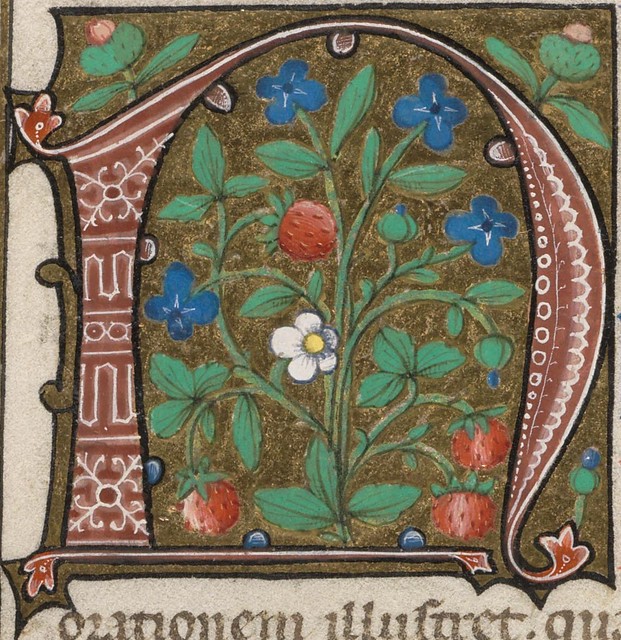
(e-codices Terms of Use)
(All the images above have been cropped slightly)
Guillaume Fichet (1433-?1480) was a leading humanist figure during the French Renaissance. As a lecturer in theology, philosophy and rhetoric, Fichet was awarded a doctorate and professorship and became Rector of the University of Paris (Sorbonne).
Together with an academic colleague, Fichet was responsible for bringing the newly created printing press to Paris for the first time in 1471, where it was installed at the Sorbonne.
It is with some measure of irony that the manuscript seen above from 1471 - essentially a record, in Latin, of 10 years of secular teachings by Fichet on the art of rhetoric - was also among the earliest books to be published by Fichet's printing press in that first year.
The top image above shows this manuscript of Fichet's teachings being presented to a representative from the royal family who sponsored the work, Princess Yolanda of Savoy. A total of four hand-written manuscripts of 'The Rhetoric' were known to have been produced.
There appears to be few details online about the scriptorium origins for the Fondation Martin Bodmer illuminated manuscript version, as seen above. It consists of about 180 parchment folio pages with text by a couple of different hands (at least) in Latin, with beautiful, detailed initials and floriated border and full page decoration, including a few drollery inclusions.
- 'The Rhetorica' by Guillaume Fichet, 1471 (Cologny, Fondation Martin Bodmer Cod. Bodmer 176) is available through the Virtual Manuscripts Library of Switzerland (thumbnail page).
- 'Guillaume Fichet's Literary Gift to Duke François II of Brittany' 2009 by Diane Booton IN: Nottingham Medieval Studies is available in full from Academia.edu.
- The first page of 'The Rhetorica' by Guillaume Fichet by George Kennedy 1987 (IN: Rhetorica) is available for free via JSTOR.
- Wikipedia (on Fichet) : English & French [T].
- 'The first Paris Press; an Account of the Books Printed for G. Fichet and J. Heynlin in the Sorbonne, 1470-1472' (1897) at the Internet Archive. [Amazon]



















4 comments :
Beautiful pages, fascinating context. Thank you for including the link to Diane Booton's bibliographic essay in Academia.edu-- definitely adds to the appreciation of these illuminated manuscript copies, as the tools of influence. Imagine a modern professor presenting an illuminated copy of his or her latest text-book, to a head of state: for example, Paul Krugman with a vellum copy of Marcoeconomics, on bended-knee before Angela Merkel. Which begs the question: what flowers would be drawn along the margins, for the delight of Chancellor Merkel? Surely not strawberries or periwinkles-- what is the flower that says "--fiscal conservative?"
Heh, thanks for your comment Ambon. I suppose there are very few people aware, these days, of the extent of messaging contained in choices of flora in the various significant moments in life. Or, at least, I'd be among those that'd have to reach for some botanical symbolism tome to learn the code.
But I'm really not sure just where I'd look for information on botaneconomical semiotics ;- )
He seems to be listing quite a few poetic meters (or whatever one calls dactyls etc) that are new to me. I feel a vague compulsion to look them all up, perhaps a result of reading too much Czech poetry of late.
Sheer gorgeousness.
Post a Comment
Comments are all moderated so don't waste your time spamming: they will never show up.
If you include ANY links that aren't pertinent to the blog post or discussion they will be deleted and a rash will break out in your underwear.
Also: please play the ball and not the person.
Note: only a member of this blog may post a comment.